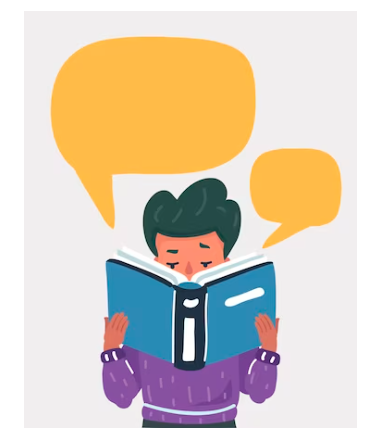“Writing for children is bloody difficult; books for children are as complex as their adult counterparts, and they should, therefore, be accorded the same respect.” – Mark Haddon.
While children’s books may appear shorter and more straightforward in content, it’s quite essential to understand that the process of writing and publishing them is by no means shorter or simpler. If you’re contemplating self-publishing a children’s book, there are several crucial factors you should be aware of before starting your journey.
And, for your help – we have gathered a few points that’ll help you steer through the process of publishing with a crystal-clear understanding.
It’s important to note that the following information doesn’t serve as an exhaustive manual for self-publishing children’s books, as the genre encompasses a wide range of styles and themes, much like the diversity found in self-help literature.
However, this list provides valuable considerations for those aiming to write their debut children’s books.
Without longing any other minute, let’s get into the details.

1. Expertise of a Skilled Illustrator is Essential
One of the pivotal factors in determining the success of a children’s book rests upon the quality of its illustrations because mediocre or uninspiring artwork may fail to captivate the imaginations of young readers.
However, it’s not merely a matter of finding someone with a knack for drawing – what truly matters is collaborating with a qualified illustrator who comprehends the industry well. Such an illustrator possesses the knowledge and skills to breathe life into your narrative, ensuring that it seamlessly translates into the pages of your book.
Here are the top three qualities to look for in a good illustrator for your children’s book:
– Artistic Style Compatibility
Ensure that the illustrator’s artistic style aligns with the tone and theme of your children’s book. A good illustrator should be versatile but also capable of creating visuals that harmonize with your story’s atmosphere and message.
– Portfolio and Experience
Review the illustrator’s portfolio and assess their experience in the industry. Look for a diverse range of work that demonstrates their ability to handle various subjects, age groups, and genres.
Experience in illustration children’s books specifically is a significant advantage, as it shows a deeper understanding of the industry’s unique demands.
– Communication and Collaboration Skills
Effective communication is paramount in every facet of life. When looking for a reliable illustrator, seek someone who can actively listen to your ideas, provide constructive feedback, and collaborate seamlessly.
A good illustrator should be open to discussions, receptive to your input, and committed to bringing your vision to life while offering creative expertise.

2. It’s Time Taking – For Sure!
Creating a children’s book is time-consuming, especially when it comes to crafting a high-quality illustration. If your chosen illustrator has a waiting period, you should anticipate a potential delay of several weeks or even months before they can commence working on your project.
However, this waiting period is just the initial phase. There are several essential steps in the process, including editing (yes, even children’s books benefit from editing), interior and cover layout design, and, ultimately, the printing or eBook creation stage. All of these components must be completed before your book can be ready for purchase.
To put things into perspective, if your goal is to release your book in time for Christmas, you must start the planning process well in advance, often a year before the release date.
Moreover, if you aspire to have your book featured in brick-and-mortar bookstores for the holiday season, you should begin the process even earlier.
Many bookstores finalize their holiday selections as early as June or July, emphasizing the need for a proactive approach to ensure your book finds its place on those holiday shelves.

3. Your Publishing Goals Shape Your Printing Strategies
The purpose behind your decision to publish a book should play a pivotal role in determining your choices regarding printing and distribution. Distribution encompasses the methods through which your book reaches its intended readers, be it through traditional bookstores, online retail platforms, or a personalized direct-to-reader sales channel.
It’s crucial to align your self-publishing strategy with overarching goals. Are you aiming to see your book displayed prominently in physical bookstores, or is your intention more personal, like creating a cherished gift for your family?
Do you already have a dedicated readership that you can steer toward your website, or do you require the broader reach and distribution capabilities offered by established retailers?
The answers to these questions can significantly impact the financial outcome of your book. For instance, if you choose to print a large quantity of books (500 or even more) for distribution through bookstores, you may earn a few dollars per sale.
However, on the other hand, you might achieve a similar level of profit by selling directly to readers through a personalized sales page, all without the need to produce a substantial initial print run.

4. Immediate Savings Could Lead to Future Expenses
Children’s books can be a substantial investment. With factors like high-quality illustrations, color printing expenses (more than black and white), and the necessity to print a considerable quantity in advance, the cost of publishing a children’s book can easily exceed $10,000.
While the temptation to find ways to economize now is understandable, it’s crucial to consider the potential long-term consequences of such decisions. Opting for a less expensive illustrator might compromise the uniqueness and appeal of your illustrations, potentially hindering your book’s sales.
Similarly, choosing print-on-demand printing to save on printing costs could result in lower quality and higher pricing, which might deter your potential buyers.
What might appear as a substantial initial investment can significantly enhance your prospects for success down the road. So, while it’s natural to seek cost savings, it’s essential to ensure you’re not sacrificing quality or cutting corners in the process.

5. Your Marketing Audience Aren’t Children
Children’s books represent themselves as a unique category where your marketing efforts are not directed towards the actual readers but towards the individuals who purchase books for children, namely the adults in their lives.
This dual audience approach adds an extra layer of complexity to your task. Not only must you create a book that resonates with children, but it also needs to captivate the parents and relatives who make the purchasing decisions.
To succeed in this multifaceted endeavor, it is paramount to produce a children’s book that stands out amidst a sea of competition. Your book should possess a distinctive and compelling quality that sets it apart on the bookshelf, enticing both children and the responsible adults who will introduce it to young readers.
This might involve an engaging narrative, vibrant illustrations, or a unique educational component that captures the imagination of all involved parties.
Wrapping It Up!
In this world of children’s books, the key is to strike a balance that captivates both kids and the grown-ups who buy them. This means crafting stories that kids love while making sure parents and caregivers see the value in those stories.
When we create children’s books, we’re not just putting words and pictures on the pages. We’re building connections between generations. Every word and illustration can ignite a child’s imagination and create lasting memories.
In this journey of making and sharing – we should bear in mind the deep impact they can have. These books are more than just stories; they’re a way to share feelings, knowledge, and special moments.
So, as we continue creating these books, let’s keep in mind how they can touch the lives of children and the hearts of those who guide them.
As we strive to create exceptional reading experiences for kids, we embrace the beautiful chance to foster a love for reading, imagination, and shared experiences that enrich lives for generations.
To all the children’s book writers and writers-to-be, we wish you good luck! May you write, shine, and grow.

 Last Updated: January 26, 2024
Last Updated: January 26, 2024

 Last Updated: January 26, 2024
Last Updated: January 26, 2024

 Last Updated: January 24, 2024
Last Updated: January 24, 2024

 Last Updated: January 23, 2024
Last Updated: January 23, 2024

 Last Updated: January 22, 2024
Last Updated: January 22, 2024


 Last Updated: January 22, 2024
Last Updated: January 22, 2024

 Last Updated: January 20, 2024
Last Updated: January 20, 2024

 Last Updated: January 20, 2024
Last Updated: January 20, 2024

 Last Updated: January 20, 2024
Last Updated: January 20, 2024

 Last Updated: January 18, 2024
Last Updated: January 18, 2024

 Last Updated: January 18, 2024
Last Updated: January 18, 2024

4,482
Share
Children’s Book Self-Publishing – Top 05 Facts About Self-Publishing a Children’s Book
While children’s books may appear shorter and more straightforward in content, it’s quite essential to understand that the process of writing and publishing them is by no means shorter or simpler. If you’re contemplating self-publishing a children’s book, there are several crucial factors you should be aware of before starting your journey.
And, for your help – we have gathered a few points that’ll help you steer through the process of publishing with a crystal-clear understanding.
It’s important to note that the following information doesn’t serve as an exhaustive manual for self-publishing children’s books, as the genre encompasses a wide range of styles and themes, much like the diversity found in self-help literature.
However, this list provides valuable considerations for those aiming to write their debut children’s books.
Without longing any other minute, let’s get into the details.
Table of Content
1. Expertise of a Skilled Illustrator is Essential
One of the pivotal factors in determining the success of a children’s book rests upon the quality of its illustrations because mediocre or uninspiring artwork may fail to captivate the imaginations of young readers.
However, it’s not merely a matter of finding someone with a knack for drawing – what truly matters is collaborating with a qualified illustrator who comprehends the industry well. Such an illustrator possesses the knowledge and skills to breathe life into your narrative, ensuring that it seamlessly translates into the pages of your book.
Here are the top three qualities to look for in a good illustrator for your children’s book:
– Artistic Style Compatibility
Ensure that the illustrator’s artistic style aligns with the tone and theme of your children’s book. A good illustrator should be versatile but also capable of creating visuals that harmonize with your story’s atmosphere and message.
– Portfolio and Experience
Review the illustrator’s portfolio and assess their experience in the industry. Look for a diverse range of work that demonstrates their ability to handle various subjects, age groups, and genres.
Experience in illustration children’s books specifically is a significant advantage, as it shows a deeper understanding of the industry’s unique demands.
– Communication and Collaboration Skills
Effective communication is paramount in every facet of life. When looking for a reliable illustrator, seek someone who can actively listen to your ideas, provide constructive feedback, and collaborate seamlessly.
A good illustrator should be open to discussions, receptive to your input, and committed to bringing your vision to life while offering creative expertise.
2. It’s Time Taking – For Sure!
Creating a children’s book is time-consuming, especially when it comes to crafting a high-quality illustration. If your chosen illustrator has a waiting period, you should anticipate a potential delay of several weeks or even months before they can commence working on your project.
However, this waiting period is just the initial phase. There are several essential steps in the process, including editing (yes, even children’s books benefit from editing), interior and cover layout design, and, ultimately, the printing or eBook creation stage. All of these components must be completed before your book can be ready for purchase.
To put things into perspective, if your goal is to release your book in time for Christmas, you must start the planning process well in advance, often a year before the release date.
Moreover, if you aspire to have your book featured in brick-and-mortar bookstores for the holiday season, you should begin the process even earlier.
Many bookstores finalize their holiday selections as early as June or July, emphasizing the need for a proactive approach to ensure your book finds its place on those holiday shelves.
3. Your Publishing Goals Shape Your Printing Strategies
The purpose behind your decision to publish a book should play a pivotal role in determining your choices regarding printing and distribution. Distribution encompasses the methods through which your book reaches its intended readers, be it through traditional bookstores, online retail platforms, or a personalized direct-to-reader sales channel.
It’s crucial to align your self-publishing strategy with overarching goals. Are you aiming to see your book displayed prominently in physical bookstores, or is your intention more personal, like creating a cherished gift for your family?
Do you already have a dedicated readership that you can steer toward your website, or do you require the broader reach and distribution capabilities offered by established retailers?
The answers to these questions can significantly impact the financial outcome of your book. For instance, if you choose to print a large quantity of books (500 or even more) for distribution through bookstores, you may earn a few dollars per sale.
However, on the other hand, you might achieve a similar level of profit by selling directly to readers through a personalized sales page, all without the need to produce a substantial initial print run.
4. Immediate Savings Could Lead to Future Expenses
Children’s books can be a substantial investment. With factors like high-quality illustrations, color printing expenses (more than black and white), and the necessity to print a considerable quantity in advance, the cost of publishing a children’s book can easily exceed $10,000.
While the temptation to find ways to economize now is understandable, it’s crucial to consider the potential long-term consequences of such decisions. Opting for a less expensive illustrator might compromise the uniqueness and appeal of your illustrations, potentially hindering your book’s sales.
Similarly, choosing print-on-demand printing to save on printing costs could result in lower quality and higher pricing, which might deter your potential buyers.
What might appear as a substantial initial investment can significantly enhance your prospects for success down the road. So, while it’s natural to seek cost savings, it’s essential to ensure you’re not sacrificing quality or cutting corners in the process.
5. Your Marketing Audience Aren’t Children
Children’s books represent themselves as a unique category where your marketing efforts are not directed towards the actual readers but towards the individuals who purchase books for children, namely the adults in their lives.
This dual audience approach adds an extra layer of complexity to your task. Not only must you create a book that resonates with children, but it also needs to captivate the parents and relatives who make the purchasing decisions.
To succeed in this multifaceted endeavor, it is paramount to produce a children’s book that stands out amidst a sea of competition. Your book should possess a distinctive and compelling quality that sets it apart on the bookshelf, enticing both children and the responsible adults who will introduce it to young readers.
This might involve an engaging narrative, vibrant illustrations, or a unique educational component that captures the imagination of all involved parties.
Wrapping It Up!
In this world of children’s books, the key is to strike a balance that captivates both kids and the grown-ups who buy them. This means crafting stories that kids love while making sure parents and caregivers see the value in those stories.
When we create children’s books, we’re not just putting words and pictures on the pages. We’re building connections between generations. Every word and illustration can ignite a child’s imagination and create lasting memories.
In this journey of making and sharing – we should bear in mind the deep impact they can have. These books are more than just stories; they’re a way to share feelings, knowledge, and special moments.
So, as we continue creating these books, let’s keep in mind how they can touch the lives of children and the hearts of those who guide them.
As we strive to create exceptional reading experiences for kids, we embrace the beautiful chance to foster a love for reading, imagination, and shared experiences that enrich lives for generations.
To all the children’s book writers and writers-to-be, we wish you good luck! May you write, shine, and grow.
Table of Content